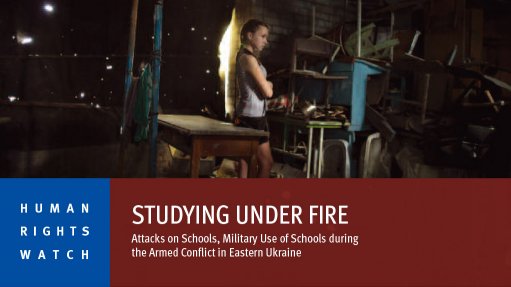
The armed conflict in eastern Ukraine between government forces and Russia-backed militants has taken a heavy toll on civilians. Over 9,000 people have been killed, including many civilians, and at least 20,000 injured, according to data gathered by the UN office of the High Commissioner for Human Rights. UNICEF, the UN children’s agency, estimates that of the more than 1.5 million people displaced by the conflict at least one third are children.
The fighting has also led to widespread damage and destruction of hundreds of kindergartens and schools on both sides of the line of contact which separates areas held by Ukrainian government forces from those held by the militants of the so-called Donetsk People’s Republic and the Lugansk People’s Republic. As a result of the destruction of vital educational infrastructure, children have faced interruptions in their education and the quality of education for many students has declined.
Both Ukrainian government forces and Russia-backed militants have carried out indiscriminate or deliberate attacks on schools using heavy artillery, mortar, and in some cases unguided rockets. They have also used schools for military purposes, deploying military forces in and near schools. They frequently broke or burned school furniture, including classroom doors, chairs and desks. In most instances, schools that were used by fighters remain unsafe because troops left behind heavy artillery or unused munitions. For example, in the last week of November 2014, at a school in Pervomaisk that rebels were using as a base, Human Rights Watch saw signs on trees next to the school that said, “Entry Prohibited. Shoot to kill” and “Mines.”
Occupying a school can turn it into a legitimate military target and can put students at risk, in violation of the laws of war. Deploying military in and near schools exposes important education infrastructure to damage and destruction.
This Human Rights Watch report documents attacks on schools on both sides of the line of contact and the use of schools by both sides for military purposes, which has turned schools into legitimate military targets. The report also describes the consequent destruction which has forced children from their schools.